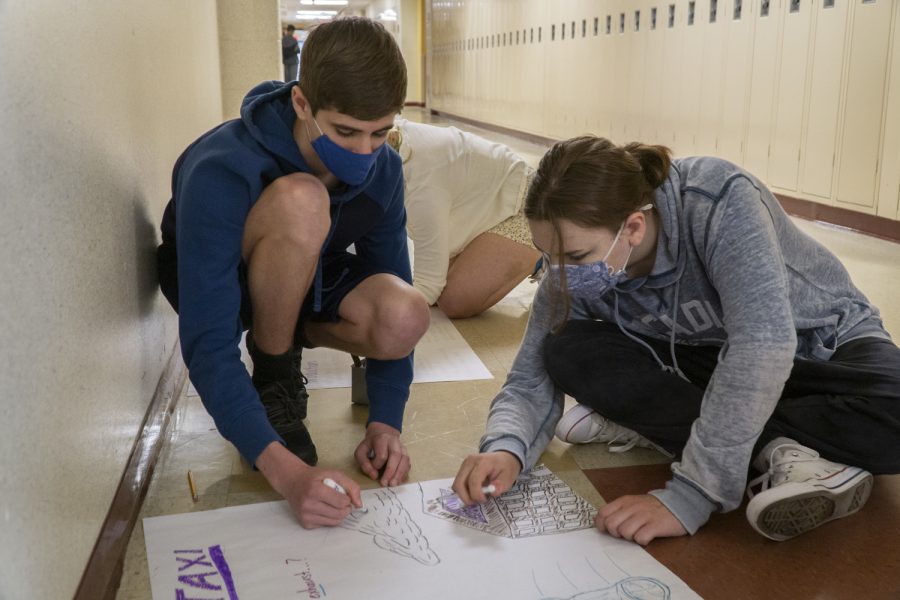COVID-19 complicates group work, Algonquin adapts
Freshmen Zach Arvantely and Natalie McNeil cooperate on a project assigned to them for their US History I class.
June 14, 2021
Due to COVID, group work at Algonquin has changed in terms of frequency and manner, impacting the experiences of students and teachers alike.
The 2010 academic article “Group Work: How to Use Groups Effectively” by Alison Burke suggests that there are both advantages and disadvantages to small group collaboration in education. The advantages, including improvements to teamwork skills, creativity and recalling information, are enough grounds for small group work to be an important part of most curricula. Recently, COVID guidelines have led teachers to adapt how this group work is conducted.
Principal Sean Bevan spoke about these adaptations, such as utilizing Zoom breakout rooms. Bevan also mentioned that some teachers have found other ways to do what they used to, such as turning and talking during a socially-distanced walk in the hallway instead of in a crowded classroom.
“I applaud my teachers who have found ways to do group work differently,” Bevan said.
History teacher Renee Moulton has clearly witnessed the changes to collaborative work due to COVID. Freshman history students usually participate in ‘Big Group’, in which students from the entire grade meet up for hands-on group learning, but COVID prevented this from happening this year.
“This year’s freshman class missed out on some social and educational opportunities,” Moulton said. “One of the great things about Big Group is interacting with other classes.”
Moulton finds that the adaptations made to group work this year haven’t been acceptable replacements to the typical experience, and she stresses the importance of group work both socially and intellectually.
“Group work fosters a more community based class atmosphere that builds throughout high school,” Moulton said.
Science teacher Brian Kelly has also noticed the effects of COVID on group work. The use of small groups in his classes is mostly limited to labs, which often involve shared materials.
“COVID guidelines said we can’t do this or that, which has made for a challenging year [for labs],” Kelly said. “Science doesn’t lend itself to distanced conversations.”
Teachers aren’t the only ones noticing differences in small group work. According to a Harbinger survey of 188 students conducted through Google Forms from May 17 to May 19, 71% of respondents say they have done less group work this year, and 67% said group work positively impacts their learning experience.
“Group work makes [school] easier, since not all the pressure is on you,” senior Cole Brooks said. “It’s also a good social outlet.”
Brooks found that a large amount of group work this year took place on Zoom breakout rooms, which he doesn’t feel are adequate replacements for their in-person counterpart.
“There is definitely an awkward tension in Zoom breakout rooms,” Brooks said.
Sophomore Audrey Long has a different view. She believes that this year has had an increase in small group work because of the ease of Zoom breakout rooms, though she does admit they aren’t a perfect replacement to the real thing.
“Sometimes [breakout rooms] were hard because no one wanted to be the first to unmute and talk,” Long said.
While this is not a typical year, Long and Brooks feel that the school has pushed through well. Kelly agrees, but worries that this year’s students have missed out a little.
“In terms of quality [of group work] we’ve overcome [COVID], but in terms of experience, it’s more of a struggle,” Kelly said.










